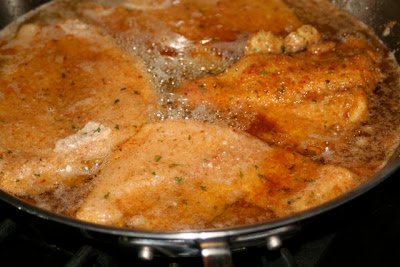So let's get this out of the way right up front: If you're Jewish and you keep kosher for
Passover, this is an almost completely useless recipe. Because, clearly, you can't make matzo in advance of Passover and eat it during Passover and have it be anything even vaguely kosher. Trying to make it during Passover, even, is flirting with disaster; I mean, where would you get the KP flour in the first place? You certainly can't just use your local store brand. And even if you found the right kind of flour, there's so much
halakhah associated with matzo...It's just not worth it.
No. This recipe is meant for fun and education only, something for Jews and non-Jews alike to do with their kids in the weeks leading up to the holiday, so you can discuss what making matzo is all about, what its meaning is, why it's eaten during these particular eight days.
Not that I've actually done that this year, mind you--as you'll notice from the lack of photos in my kitchen accompanying this recipe. But I have an excuse! It's not a good one, but it's an excuse. See, my kids' religious school took them on a field trip last weekend to the
Model Matzo Bakery in Westwood, where they did all that--talked about the meaning of the holiday, made their own matzo, ate it, complained about not having anything to put on it, complained about it being burnt at the edges, complained about how this friend got a bigger piece and that friend's one wasn't burnt as much...never mind that they didn't like the way it tasted in the first place.
Perhaps you can see why I'm not all that jazzed about the idea of doing that all over again in my house this year, yes?
Still, it was actually a really fun trip, and tasting 'home-made' matzo got me excited about the upcoming holiday and all my only-at-this-time-of-year recipes, some of which I'll share with you over the next few weeks.
But to do that, I figured, I should start with the basics. And when it comes to Passover, it doesn't get any more basic than this.
Matzo/Matzoh/Matza/Matzah
1 part cold water
3 parts flour
Aaaaaaand...that's it on the ingredients, ladies and gents. You will, however, want to have a rolling pin and some kind of dough-poking implement (a fork will do the trick) on hand. Plus something to bake the matzo on; see instruction number seven.
Here's the quick and dirty on what to do:
1. Turn on your oven; you want it at as high a temperature as you can get it without it being on broil. (Actually, what you really want is a matzo oven, which is something like a brick pizza oven. But I'm assuming that you don't have one of those any more than I do, so let's go with the highest-temp-you-can-get concept and leave it at that.)
A note: If you want to do this as authentically as you can, you need to do this oven-preheating
way in advance. You don't want to have to wait any time at all during the actual process for the oven to heat up, since "real" matzo needs to be made and fully cooked within 18 minutes from the time you add the ingredients together. Why 18 minutes? Supposedly, 18 minutes is the amount of time it takes for bread to start to rise. Thus, you'll want to have everything you need on hand (including a timer that you'll set when the time comes), get your work area prepped ahead of time, and make sure the oven has heated to its top temperature. In other words, you'll need to work quickly.
2. Combine cold water and flour; start your timer, as soon as you pour the water into the bowl.
3. Mix the water and flour until combined, and knead the resulting dough into a ball.
4. Pull off a piece of the dough and roll out on a lightly floured surface into as thin a circle as possible. (It doesn't need to be a perfect circle; you don't have time for perfection! You're a slave escaping Egypt, remember?)
5. Poke holes into the dough with the fork. This is to prevent the dough from rising. If it could. Which it can't, since there's no yeast, and not enough time. But, still...poke. Just in case. (Makes sense to me. But then again, I'm an obsessive-compulsive. So, you know. Grain of salt.)
6. Keep rolling out matzos until about 12 to 14 minutes have passed, at which point you'll want to throw whatever you've made into the oven.
7. The recipe I found says you should bake them for two to three minutes, but my oven seems to take at least four. They also say you should bake them on "baking tiles." If you have a pizza stone, that would do the trick. But if you're like me, it's parchment paper on cookie sheets.
8. When your set-for-18-minutes timer goes off, pull 'em out of the oven--cooked or uncooked. Let cool for a few minutes, then give 'em a taste.
Mmmm. Nothing like hard, tasteless sheets of flour-paste, eh? Well, if that's how you feel, you've got it all wrong, people. Matzo is the World's Greatest Butter-and-Salt Delivery System. Or spread some peanut butter on it. Maybe some egg salad? A little tuna? Tuna and cheese, popped back into the probably still-warm oven so that you get a matzo tuna melt?
The possibilities are endless.
Ah, matzo.
Dayenu.



















































